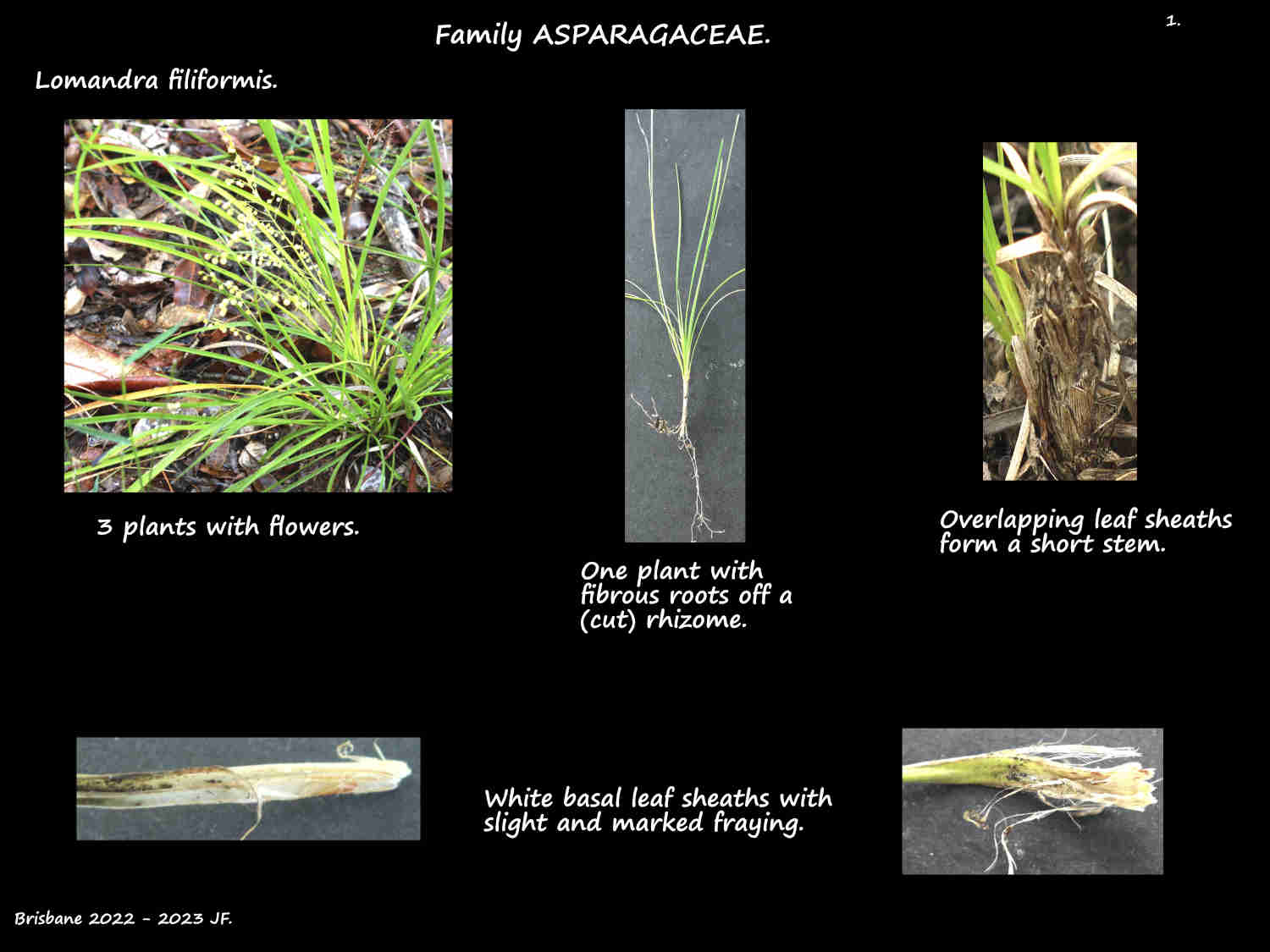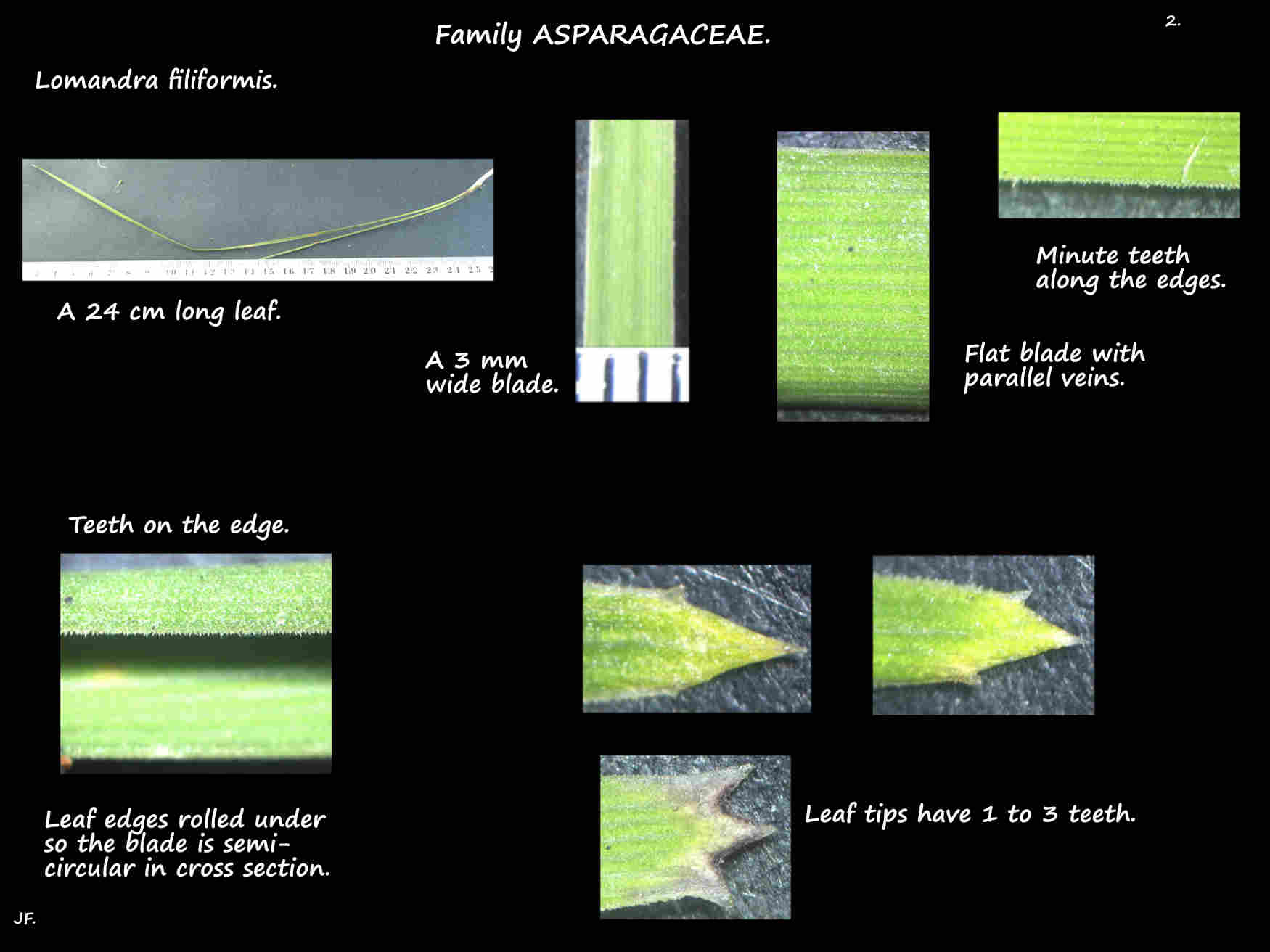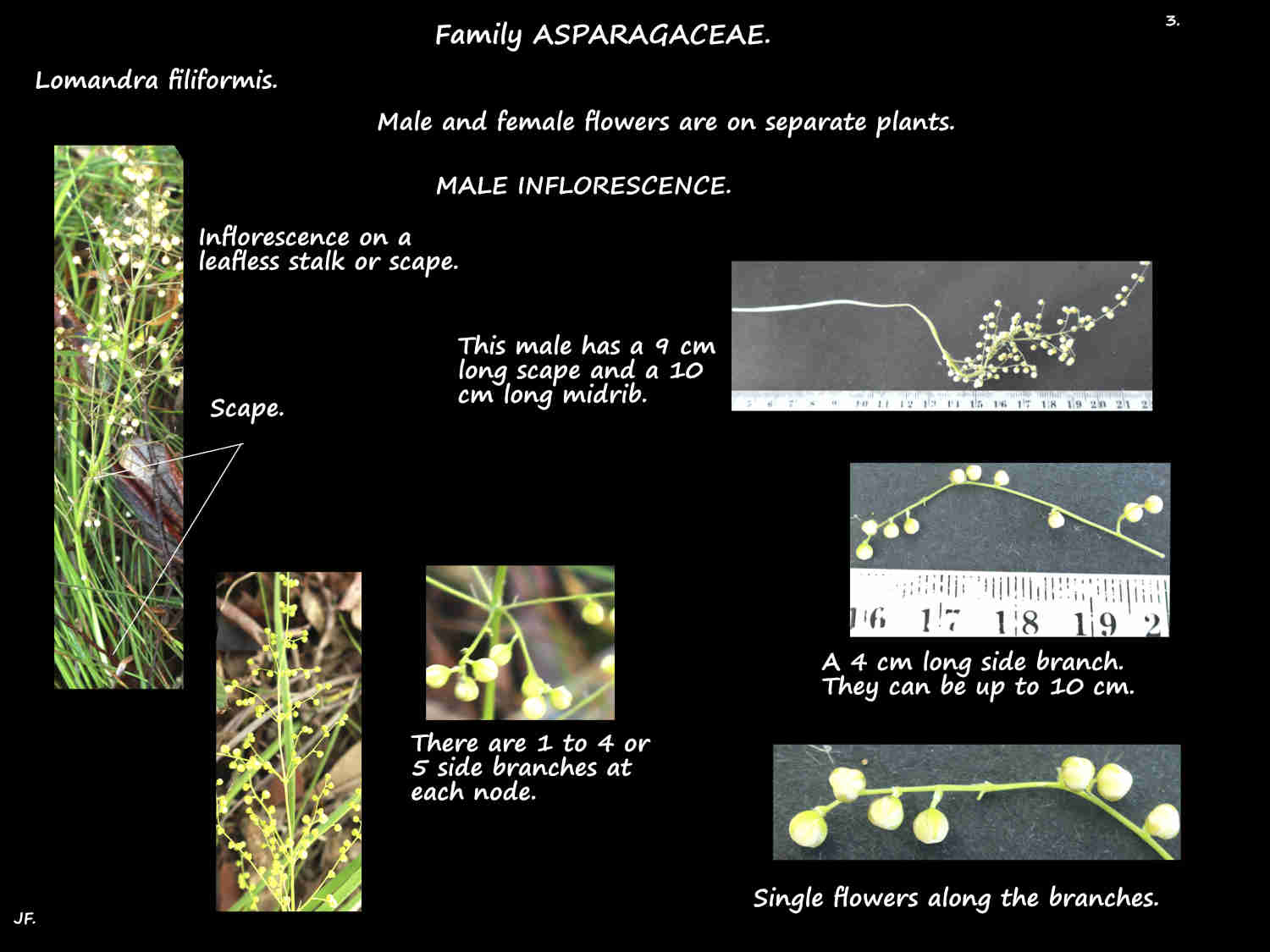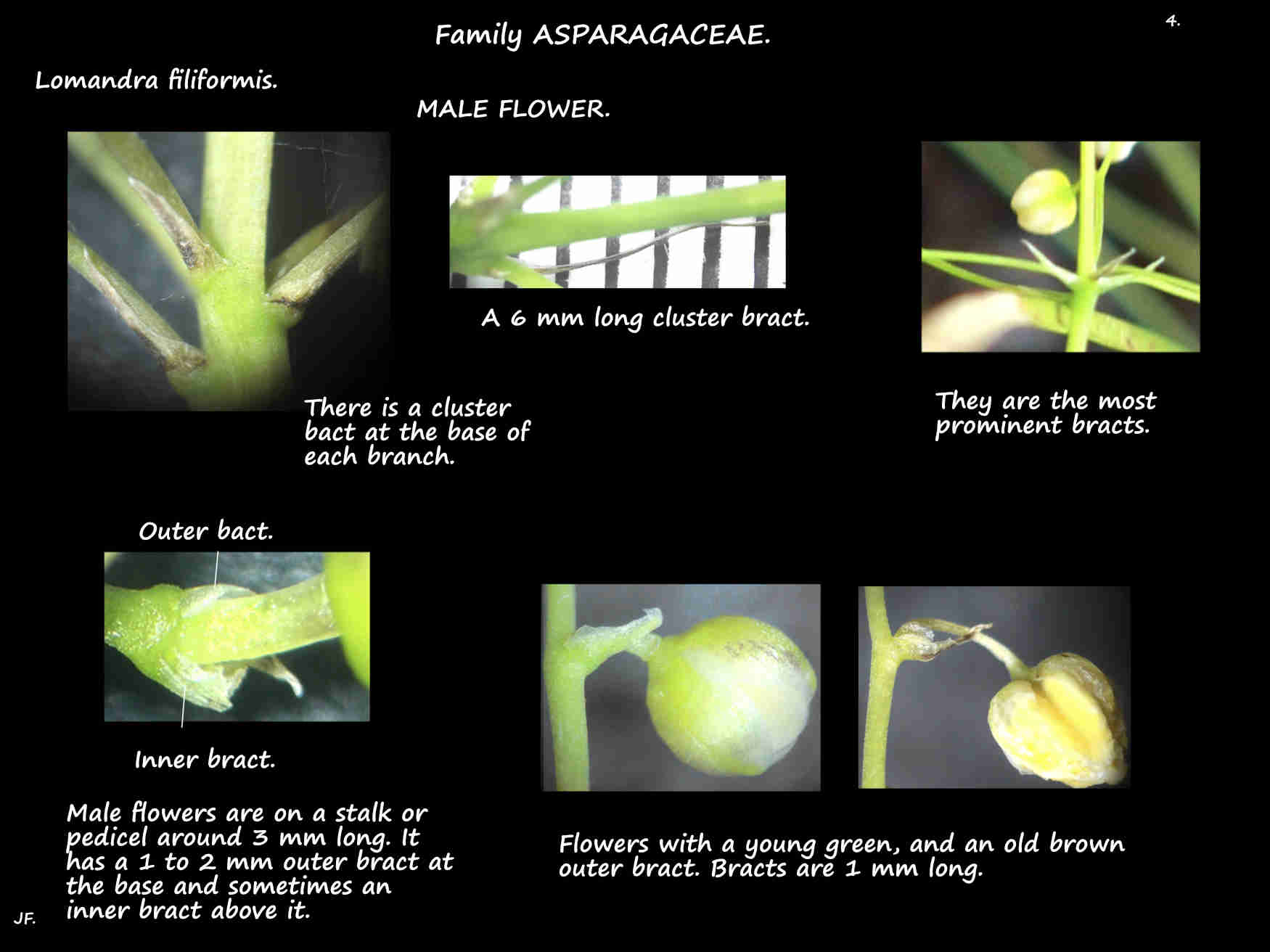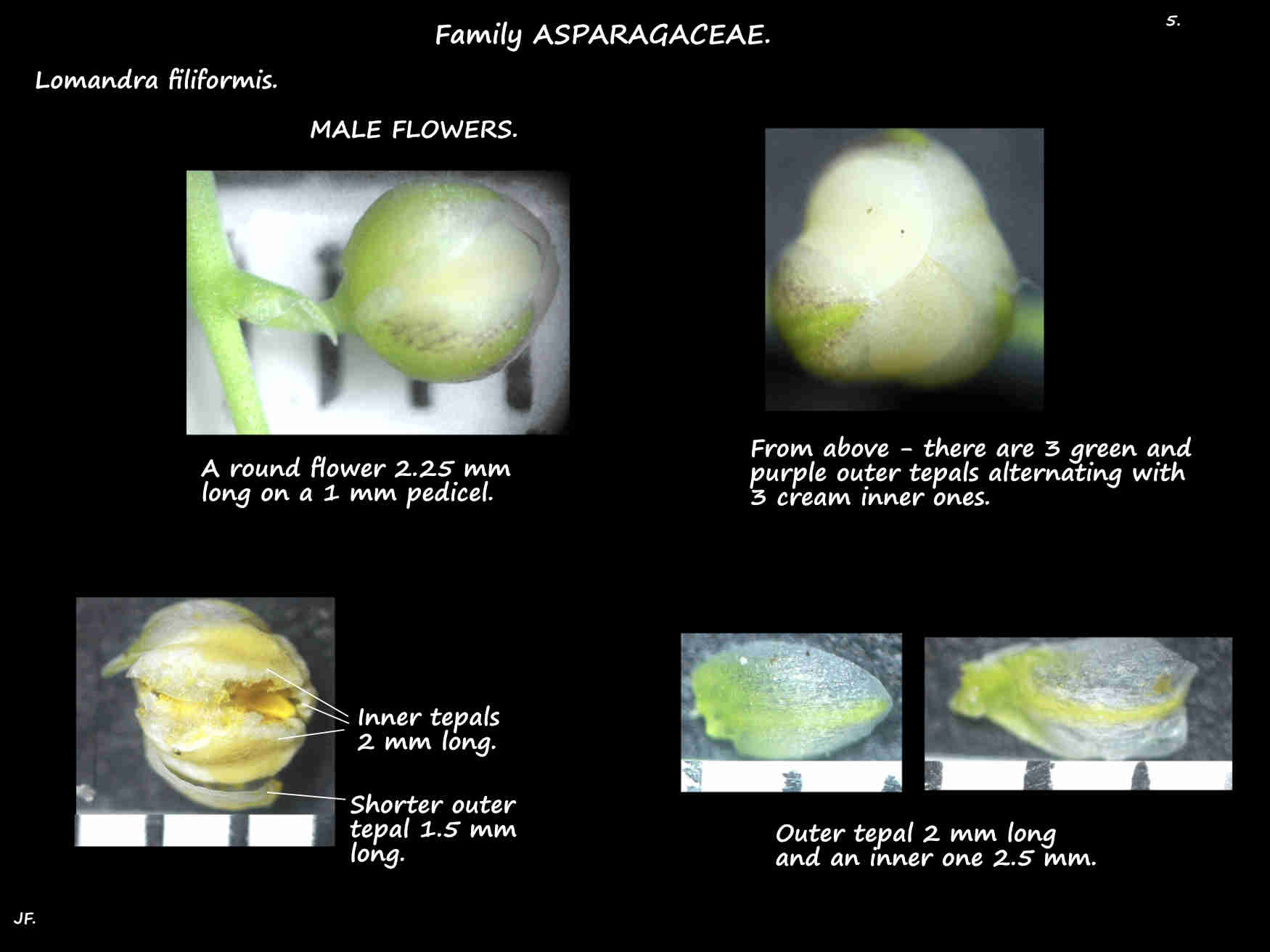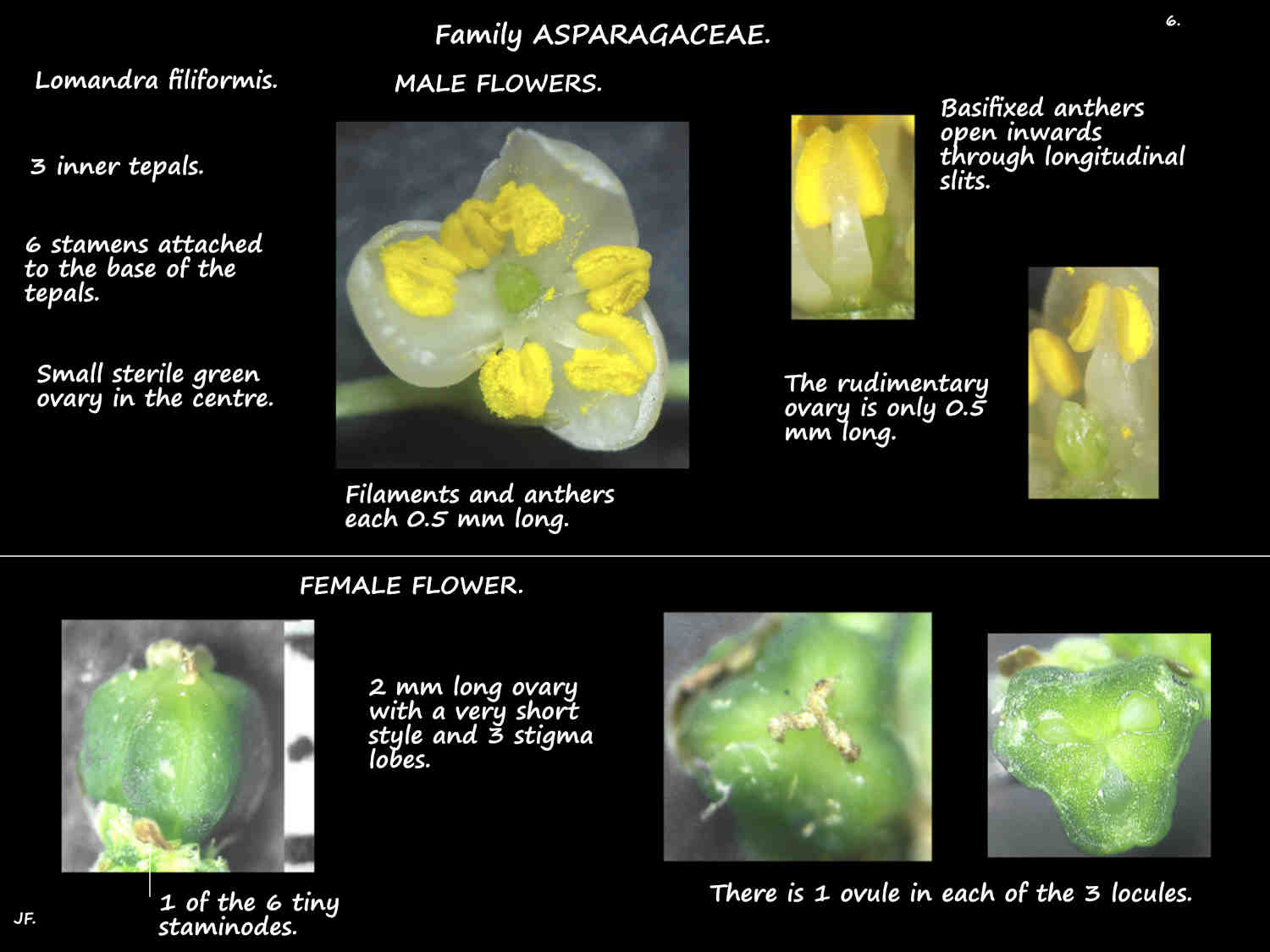Lomandra filiformis.
Wattle Mat-rush is native to Australia.
The perennial herbs have leaves growing from underground stems or rhizomes.
As the rhizomes lengthen new tufts of leaves grow along them forming tussocks.
The leaves are initially erect but arch over as they lengthen and may become prostrate.
Strap-like leaves up to around 50 (90) cm long and 5 mm wide have a tip with 1 to 3 small teeth.
The green to blue-green blade can be flat or the edges may roll under.
The base of the blade widens into a sheath that has frayed or occasionally smooth edges.
The cream to yellow male and female flowers are on separate plants.
There are cluster bracts at the base of the inflorescence and any branches.
The smaller outer and inner bracts under each flower are only 1 to 2 mm long.
Male inflorescences have alternate and/or whorled branches along the midrib or rachis.
The midrib is usually slightly rough to the touch.
The branches typically hold single flowers along them but occasionally groups of 2 or 3.
The round flowers, on a stalk or pedicel up to 3 mm long are about 2 mm long and wide.
There are 6 broad tepals in 2 whorls with the inner 3 being slightly larger and thicker.
There are 6 stamens and a rudimentary ovary.
Female inflorescences, shorter than the males may be a spike or have occasional branches.
The flowers, on almost no pedicel are around 3 mm long.
They have a 3-angled ovary with one ovule in each of the 3 locules.
The style holding the 3 stigma lobes is very short.
The 6 stamens are reduced to tiny infertile staminodes.
The fruit are round slightly 3-angled brown capsules with 2 or 3 seeds.
Lomandra filiformis subsp. filiformis is the plant commonly seen in Queensland.
They form small clumps with leaves up to 25 or 30 cm long and around 2 mm wide.
The leaf edges are rolled under to various degrees but more so than the species plant.
The leaf tip and sheath are the same as L. filiformis.
Male inflorescences, up to 20 cm long are mostly branched.
The branches, up to 10 cm long can be alternate or in whorls.
The single round yellow flowers along the branches are on pedicels.
The mostly unbranched female inflorescences are typically a spike up to 7 cm long.
Tubular flowers, on very short stalks are mostly in singles along the smooth midrib.
The male and female flowers are the same as the species flowers.
J.F.

